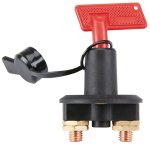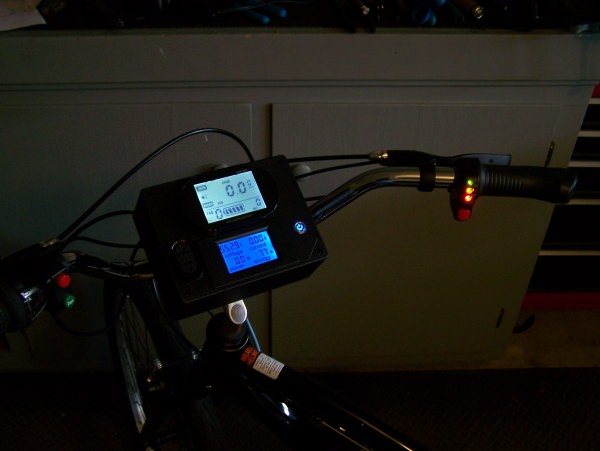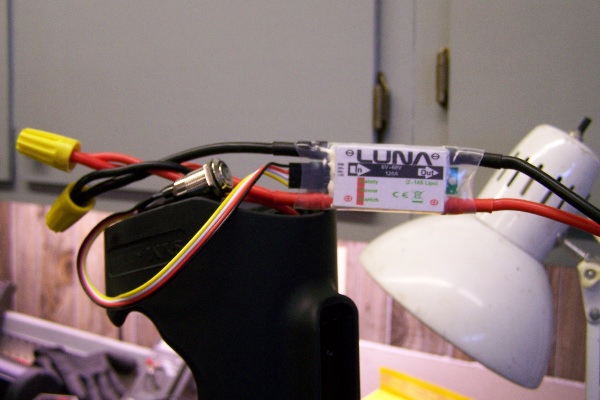Hey there! This is actually my first time posting! I build Electric-Assist Tricycles. They currently draw up to 50A continuous at 36V.
I have been using automotive switches (and before that, e-scooter switches) for my 'frankentrikes' (www.frankentrikes.com).
My current rated 12V 35A automotive switch just fried. It took 4 years--which is pretty great--but I'm not sure if I'm going to be able to get another one of those, as that model has be discontinued.
I'm aware that electric golf carts generally use 50A solenoids. In theory, that's a better match for my trike methinks.
I can't really conceptualize how to install it however. I 'get' that there is an ordinary key switch activating the solenoid (or 'contacter') but I'm going mad trying to understand how it all gets wired into my vehicle.
Do I get a 12V or a 36V solenoid/contacter? I mean, most switches are rated at 12V (I have a DC-DC 36 to 12 step down converter), but main power is 36V.
Soo....which do I get? I see 12V 200A solenoids, which would probably do the trick, but I also see 36V 50A contacters/solenoids.
With my current key switch, it is brutally easy, just wire it in-line with the red wire (+) that comes out of the battery, so that it interrupts the main power. Works great until I blow it up, which always happens eventually.
But with two components, what do I do? Do the 2 large ports get connected in-line with the (+) red wire out of the battery? No, that wouldn't make any sense! Would instead the small ports get connected in-line with the (+) red wire out of the DC step down power to 12V? Well that's great, but then the main power stays on in order to do that, draining the battery! This is crazy! It's so easy with a heavy duty key switch and now I'm sooo confused.
*****
I have another option, which is to use a master disconnect like you see on a Caterpillar or something; the problem there being that the keys are generic! One Caterpillar key fits all of the same switches! It's super frustrating that I haven't found a single master disconnect that has ordinary keys like you would want for your personal vehicle. I have a Pollak in house that would take the heat.
****
I am also looking at remote switches, but the problem will be the same perhaps as with the solenoid/contacter dilemma, in terms of where to connect the power so that it works! I have one of those in house also.
*********************
Could anyone offer any guidance on how to wire a solenoid? or maybe some knowledge of some top secret master disconnects that have personal keys? Thanks so much!
I have been using automotive switches (and before that, e-scooter switches) for my 'frankentrikes' (www.frankentrikes.com).
My current rated 12V 35A automotive switch just fried. It took 4 years--which is pretty great--but I'm not sure if I'm going to be able to get another one of those, as that model has be discontinued.
I'm aware that electric golf carts generally use 50A solenoids. In theory, that's a better match for my trike methinks.
I can't really conceptualize how to install it however. I 'get' that there is an ordinary key switch activating the solenoid (or 'contacter') but I'm going mad trying to understand how it all gets wired into my vehicle.
Do I get a 12V or a 36V solenoid/contacter? I mean, most switches are rated at 12V (I have a DC-DC 36 to 12 step down converter), but main power is 36V.
Soo....which do I get? I see 12V 200A solenoids, which would probably do the trick, but I also see 36V 50A contacters/solenoids.
With my current key switch, it is brutally easy, just wire it in-line with the red wire (+) that comes out of the battery, so that it interrupts the main power. Works great until I blow it up, which always happens eventually.
But with two components, what do I do? Do the 2 large ports get connected in-line with the (+) red wire out of the battery? No, that wouldn't make any sense! Would instead the small ports get connected in-line with the (+) red wire out of the DC step down power to 12V? Well that's great, but then the main power stays on in order to do that, draining the battery! This is crazy! It's so easy with a heavy duty key switch and now I'm sooo confused.
*****
I have another option, which is to use a master disconnect like you see on a Caterpillar or something; the problem there being that the keys are generic! One Caterpillar key fits all of the same switches! It's super frustrating that I haven't found a single master disconnect that has ordinary keys like you would want for your personal vehicle. I have a Pollak in house that would take the heat.
****
I am also looking at remote switches, but the problem will be the same perhaps as with the solenoid/contacter dilemma, in terms of where to connect the power so that it works! I have one of those in house also.
*********************
Could anyone offer any guidance on how to wire a solenoid? or maybe some knowledge of some top secret master disconnects that have personal keys? Thanks so much!




